In the heart of Old Delhi, where the city’s chaos pulses through the streets, a majestic silhouette rises above the skyline. Towering minarets and sweeping domes stand tall above the noise, drawing your gaze to one of India’s grandest legacies: the Jama Masjid.
Built in the 17th century by Emperor Shah Jahan, the Jama Masjid is the largest mosque in India and a masterpiece of Indo-Islamic architecture. From its intricate marble inlays to the vast red sandstone courtyard, history is etched into every stone.
To help you make the most of your visit, we’ve put together this comprehensive guide to exploring Jama Masjid on your own—no tour guide required. We’re covering everything from what to see inside the mosque and how to get there, to the best times to visit and our top tips you won’t want to miss.


.jpg)
Jama Masjid Essential Information
Location: Jama Masjid, Old Delhi
Entrance Gate: Gate 3 (Northern Gate)
Opening Times: 7am-noon & 1:30-6:30pm
Entry Fee: ₹300 ($3.50) + ₹100 ($1.20) for the Minaret.
Note: As the Jama Masjid is an active place of worship, visitors are expected to dress modestly; shoulders and knees must be covered. Robes are available for rent at the entrance for ₹50 ($0.60).
.webp)
History & Significance
Delhi’s Jama Masjid began construction on October 6, 1650 commissioned by Emperor Shah Jahan, the fifth Mughal ruler in India and the same visionary behind the Taj Mahal.
To bring his grand vision to life, expert craftsmen were called not only from across India but also from Arabia, Persia, Turkistan, and even Europe. It’s believed that over five thousand workers labored daily for six years to complete the mosque. The total cost of construction was around ten lakh rupees, which was a massive amount in the 1600s and likely worth tens of millions of rupees today.
.webp)
As one of the largest mosques in India, it was built to symbolize the power and piety of the Mughal Empire. It stands proudly on a small hill called Bhojla Pahari just a thousand yards from the Red Fort in Shahjahanabad—the Mughals’ new capital, now part of Old Delhi.
.webp)
Emperor Shah Jahan originally named the Jama Masjid in Delhi as Masjid-i-Jahan Numa. Jahan translates to “world,” and Numa means “visible,” highlighting the mosque’s grandeur and its commanding presence at the heart of the Mughal capital.
Looking to explore more of the capital? Our 3-day Delhi itinerary takes you through the city’s top attractions, hidden gems, and local favorites you won’t want to miss.
Visitor Tips & Etiquette
Before visiting the Jama Masjid, here are our top tips and reminders to help you have a smooth and enjoyable experience.
- Arrive early. It’s quiet and peaceful right after opening. We had the mosque to ourselves for about 15 magical minutes.
- Bathrooms are on the left near the entrance. Free to use, but the cleaner may expect a small tip.
- Dress modestly. Cover shoulders and knees. Women must wear a robe (available at the gate for ₹50 / $0.60).
- Remove shoes before entering. Bring socks or buy disposable slippers for ₹100 ($1.20). Shoe storage is ₹50 ($0.60), which you’ll pay when you pick them up.
- Be respectful. This is a place of active worship, so keep noise to a minimum and avoid visiting during prayer if you’re just sightseeing.
Skip the hassle of airport SIM cards. Get your eSIM on Airalo today and stay connected from the moment you land!
.webp)
Experiencing Jama Masjid
Step inside one of India’s grandest mosques and soak in the sights, sounds, and serenity. Here’s what to look out for as you explore this stunning Mughal masterpiece.
Gateways
The mosque has three towering gates—on the north, south, and east—each set atop wide, three-sided staircases.
The eastern gate, known as the Shahi Gate, is a grand three-story structure that once housed the mosque’s caretakers. It was reserved only for the Emperor, who would arrive in a royal procession from the Red Fort every Friday and on Eid, joined by princes, nobles, and his entourage.
In contrast, the north and south gates are simpler in design, each standing about two stories high. Today, visitors typically enter through Gate No. 3, which is the northern gate.
We arrived early in the morning and wandered briefly before spotting a gatekeeper at the northern entrance. With a warm smile, he unlocked the barred gate, allowing us to be the first to step into the quiet courtyard that day.
Planning a trip to Jaipur? Read our 3-day itinerary and discover the Pink City and more.
.webp)
Courtyard
Once inside, we found ourselves alone in the mosque’s vast courtyard, paved with red sandstone and stretching roughly 100 by 85 metres. It can accommodate a staggering 25,000 worshippers.
.webp)
With no other visitors in sight, the sheer scale of the space struck us all the more. For about 15 minutes, we had it entirely to ourselves, joined only by a few staff quietly laying out prayer mats for the morning prayers to come.
Tip: From the entrance, head to the eastern gate. This vantage point offers the best view of the mosque’s full scale. Don’t miss the two sundials tucked into the southeastern corner.
.webp)
At the heart of the courtyard sits a marble tank, roughly 17 meters long and 15 meters wide. This tank is used for wudu (ablution), the ritual washing performed by Muslim worshippers before prayer. Each outer corner is fitted with large marble lamp holders, and at the center stands a delicate fountain with leafy motifs carved into its top.
Ready to explore India? Stay protected with Heymondo and enjoy an exclusive 5% discount.
.webp)
Makabbar
Near the ablution tank, beneath the mosque’s main arch, stands a makabbar. Due to the Jama Masjid’s immense size, the Imam’s voice couldn’t carry across the entire congregation. To address this, Prince Salim (son of Emperor Akbar II) commissioned a grey stone platform in 1829, which was later replaced with the marble version seen today.
The Mukabbir, who assists in leading the prayer, stands on this platform to signal the changes in position during the ritual. Look closely and you’ll notice the platform enclosed in a marble jali—an intricately carved latticework, similar to the one surrounding the cenotaph at the Taj Mahal.
.webp)
Prayer Hall
A short flight of stairs leads up to the main prayer hall, which is divided into an inner and outer aisle. Each aisle is further divided into seven bays with ornamental pillars and framed by cusped red sandstone arches inlaid with white marble.
A sign near the outer aisle indicates that tourists aren’t allowed in the inner section. That said, when we visited, the caretaker waved us in, and we saw other tourist groups doing the same. It may have been because no prayers were in session at the time. When in doubt, follow the signs or ask for permission.
The inner aisle holds more significance as it houses the nave, the Mihrab, and the pulpit.
Don’t leave for India without the right visa. Read our India Visa Guide to help you figure out exactly what you need.
Nave
Located beneath the central dome, the nave features a soaring ceiling, adorned with simple panels inlaid with white marble lines, and beautiful red stone walls. Be sure to look up to admire the stunning chandelier that hangs overhead.
.webp)
Mihrab (Central Recessed Arch)
This is the most sacred part of the mosque, indicating the direction of the Qibla (Mecca) to guide worshippers in prayer. The Mihrab is lined with shining white marble, intricately embossed with tracery. Above, you’ll notice two circulets, each inscribed with “Ya Ghatfar” (O Forgiver) in black marble.
Minbar (Pulpit)
To the right of the central mihrab, the minbar is a finely crafted pulpit carved from a single block of white marble. It features three steps leading to a small platform from which the Imam delivers the Friday Khutba (sermon).
.webp)
Minarets
After exploring the prayer hall, make your way back to the northern gate to buy a ticket for the minaret (₹100 or $1.20 per person). Entry is through a small wooden doorway, followed by a walk along the rooftop of the northern cloisters to the base of the northern minaret.
The towering minarets of the Jama Masjid are iconic symbols of Islamic architecture. Standing over 40 meters tall, these slender structures are made of red sandstone, vertically striped with inlaid white marble. They were once used for the Azan, the call to prayer that echoes across the city.
.webp)
Each minaret was constructed with a subtle outward tilt to ensure that, if ever collapsed, it would topple into the courtyard rather than onto the prayer halls.
The climb up 130 narrow, spiraling steps can be a challenge, but the view from the top is worth every step. From there, Old Delhi stretches out in a chaotic patchwork of rooftops, offering a sharp contrast to the serene expanse of the mosque below.
Fun Fact: In 1817, the northern minaret was struck by lightning, and the southern one followed in 1895. With that in mind, you might want to avoid climbing them during the monsoon season.
Marble Domes
Before heading back down, take a moment to admire the Jama Masjid’s iconic domes up close. The roof features three domes, with the largest at the center, all clad in white marble, striped with black, and topped with a bronze and brass finial.

Read: How to Travel India by Train
.webp)
Top Tours in Old Delhi
If you’d like to explore more of Delhi with an English-speaking guide, here are some top tours that include a visit to the Jama Masjid.
How to Get to Jama Masjid
Here are the best ways to reach the Jama Masjid in Old Delhi.
Metro: The nearest stations are Jama Masjid (on the Violet Line) and Chawri Bazaar (on the Yellow Line). Both stations are within walking distance of the mosque.
Rickshaw: Auto-rickshaws are a convenient option for a quick ride to the Jama Masjid. You can easily find one near popular areas like Chandni Chowk or the Red Fort. Be sure to agree on the fare before hopping on.
Grab/Ola: Book a ride via these ride-hailing apps to get dropped off near the mosque. The closest drop-off point is usually near Gate 1 along Matia Mahal road, from where you can walk to the entrance at Gate 3 (Northern gate).

Read: Transportation in India: What You Need to Know
.webp)
Where to Eat Nearby
If you’re looking for a place to eat after visiting the Jama Masjid, here are some of the best local spots just a short walk away.
Karim’s: Serving Old Delhi since 1913, this iconic spot is famous for its Mughlai classics like seekh kebabs and rich mutton korma. 9am-1am
Qureshi: Famous for its tender, perfectly grilled mutton and buttery chicken kebabs that locals swear by. 2pm-midnight
Aslam Chicken: A local favorite for its signature butter chicken, dripping in flavor (and butter). Expect crowds. 1pm-12:30am
.webp)
Where to Stay
Most accommodations in Old Delhi are centered around the Paharganj area, offering plenty of nearby restaurants and easy access to Jama Masjid. Find all accommodations in Delhi here.
Best Time to Visit
The best time to visit Jama Masjid is from October to March, when temperatures are pleasant. Come early for a more peaceful experience and catch the morning light casting shadows across the red sandstone courtyard. Avoid peak hours, especially Fridays and during Ramadan, to skip the biggest crowds.
That’s the complete guide to visiting the Jama Masjid in Delhi, India.
For more architectural marvels, head to Agra and discover more Mughal wonders, including the iconic Taj Mahal, Agra Fort, and the royal tombs that dot the landscape. Explore Agra with our 2-day itinerary to help plan your trip and make the most of your visit to these magnificent landmarks.
Let us know if you have any questions below.
Some links in this Jama Masjid Travel Guide may be affiliate links.
This means that if you make a purchase after clicking on one of our links, we will receive a small commission at no extra cost to you. Please know that by doing so, you are supporting Colorful Journeys in continuing to provide free high quality content to help you in your travels!
.webp)
.webp)
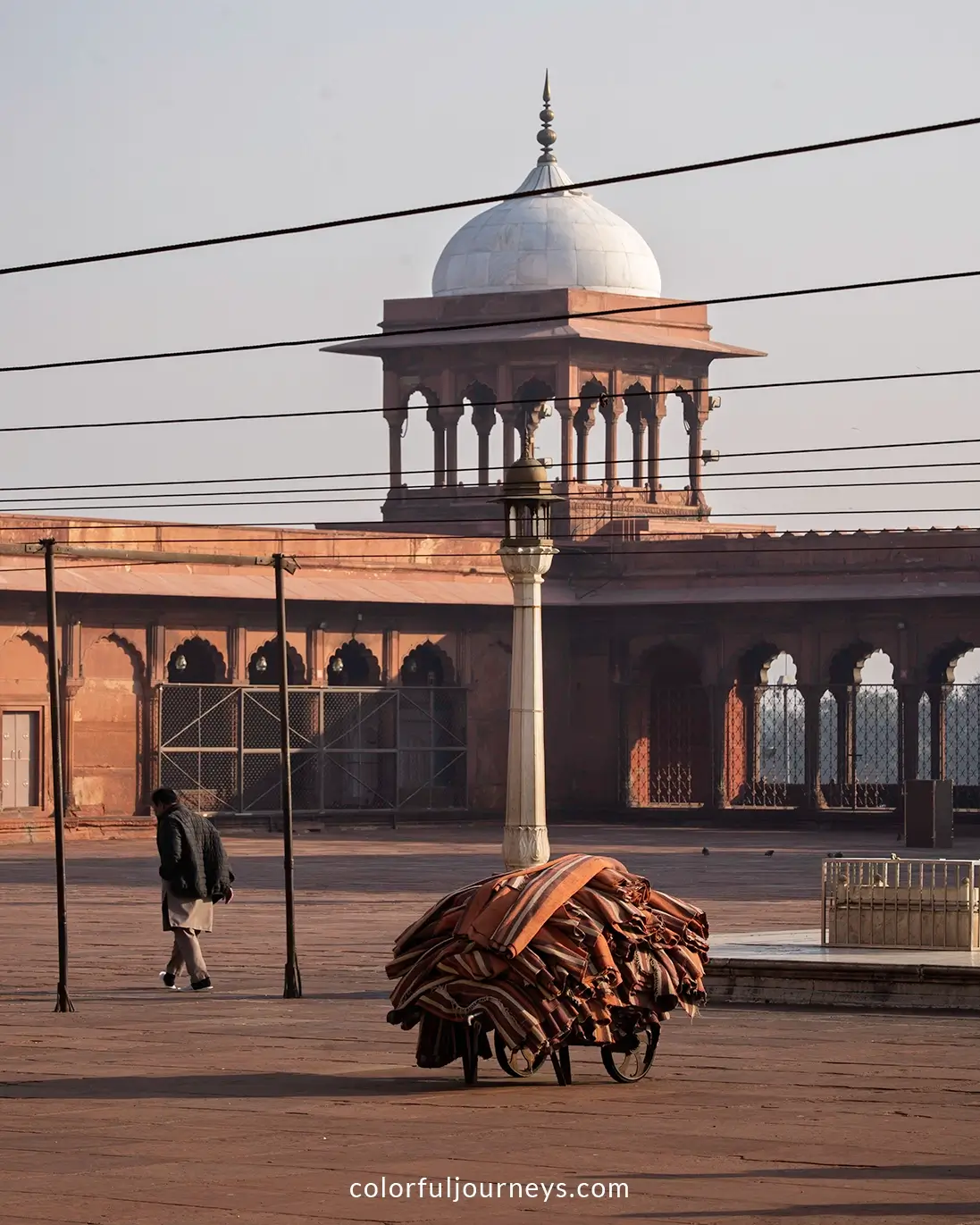
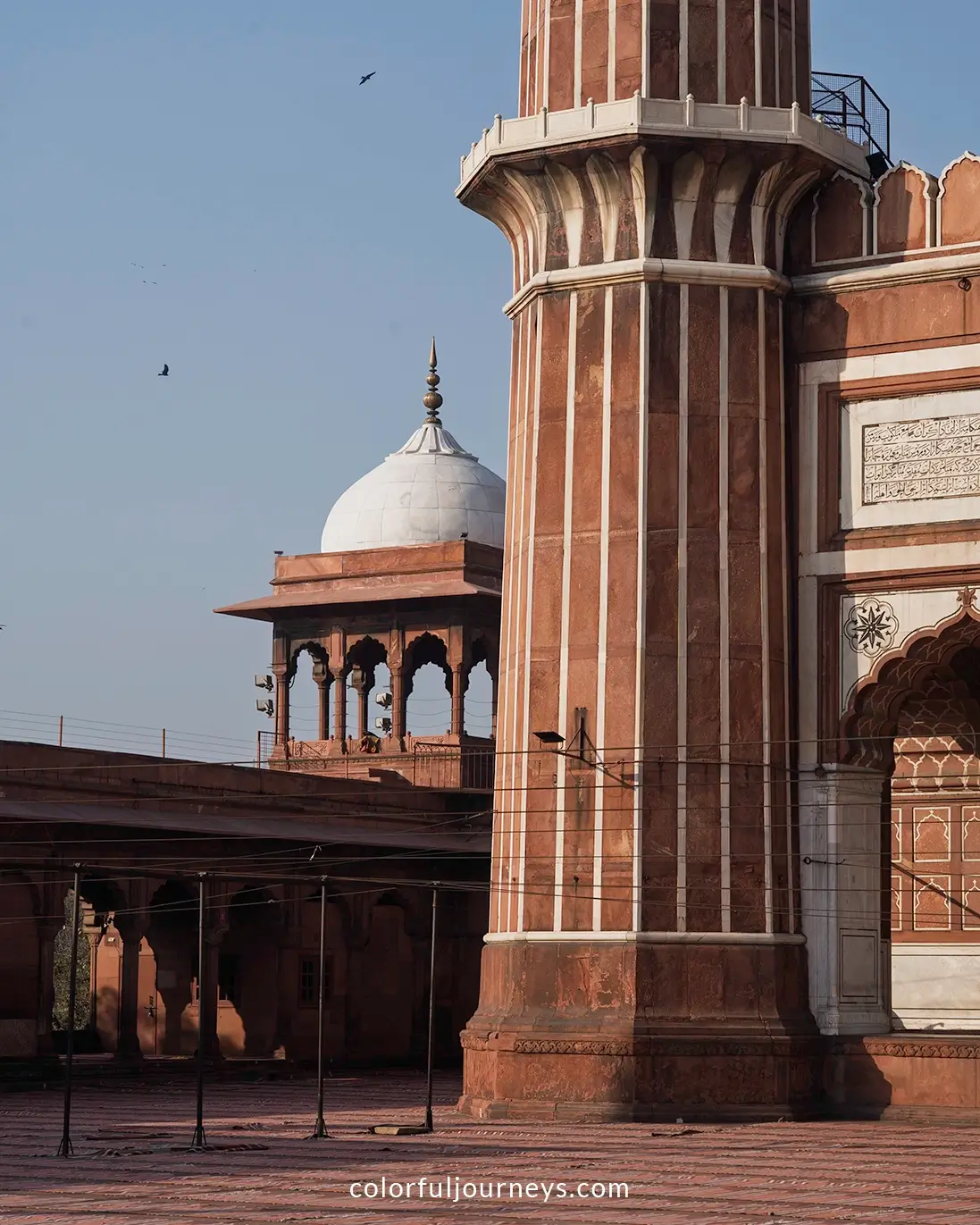
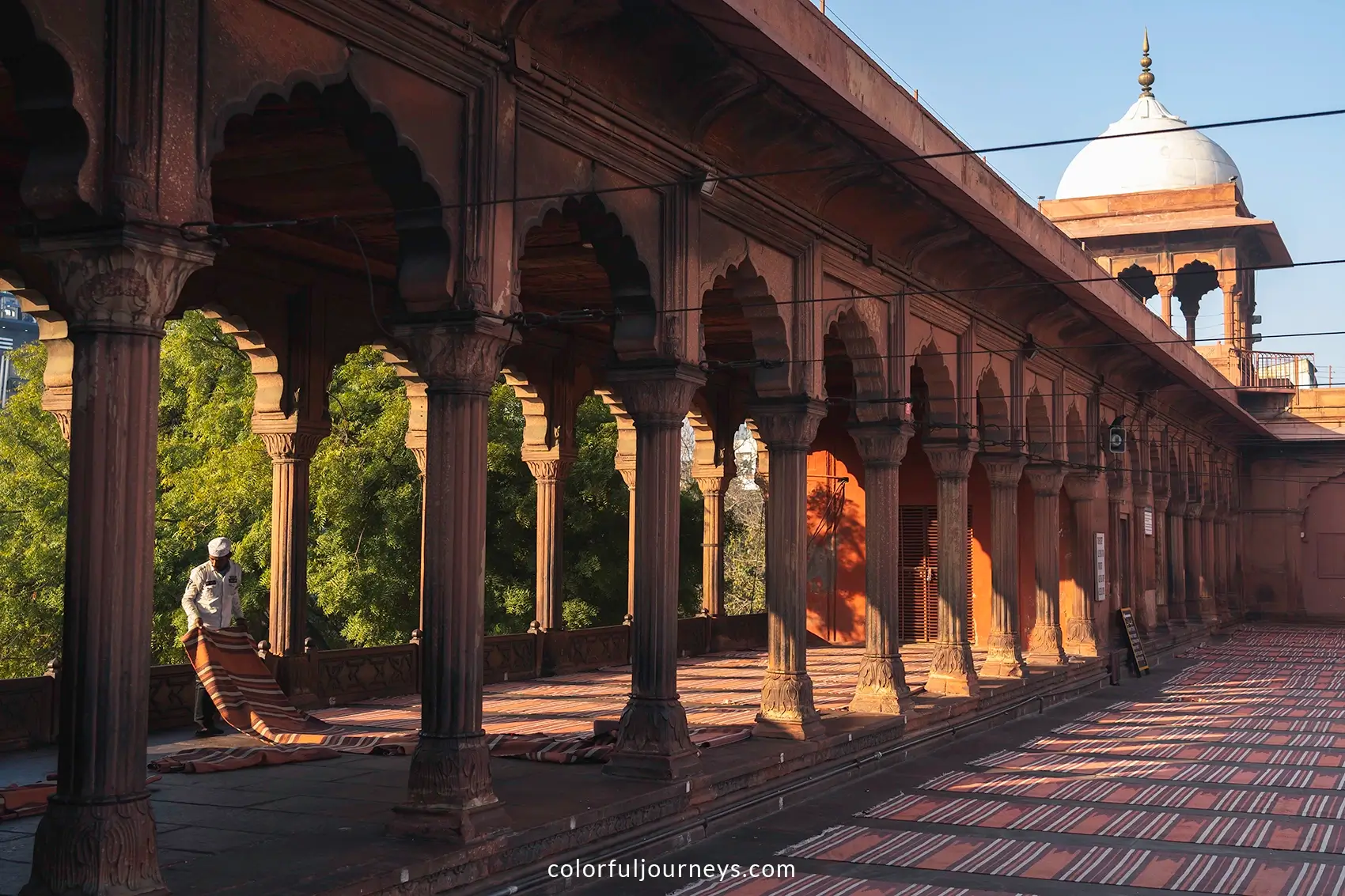
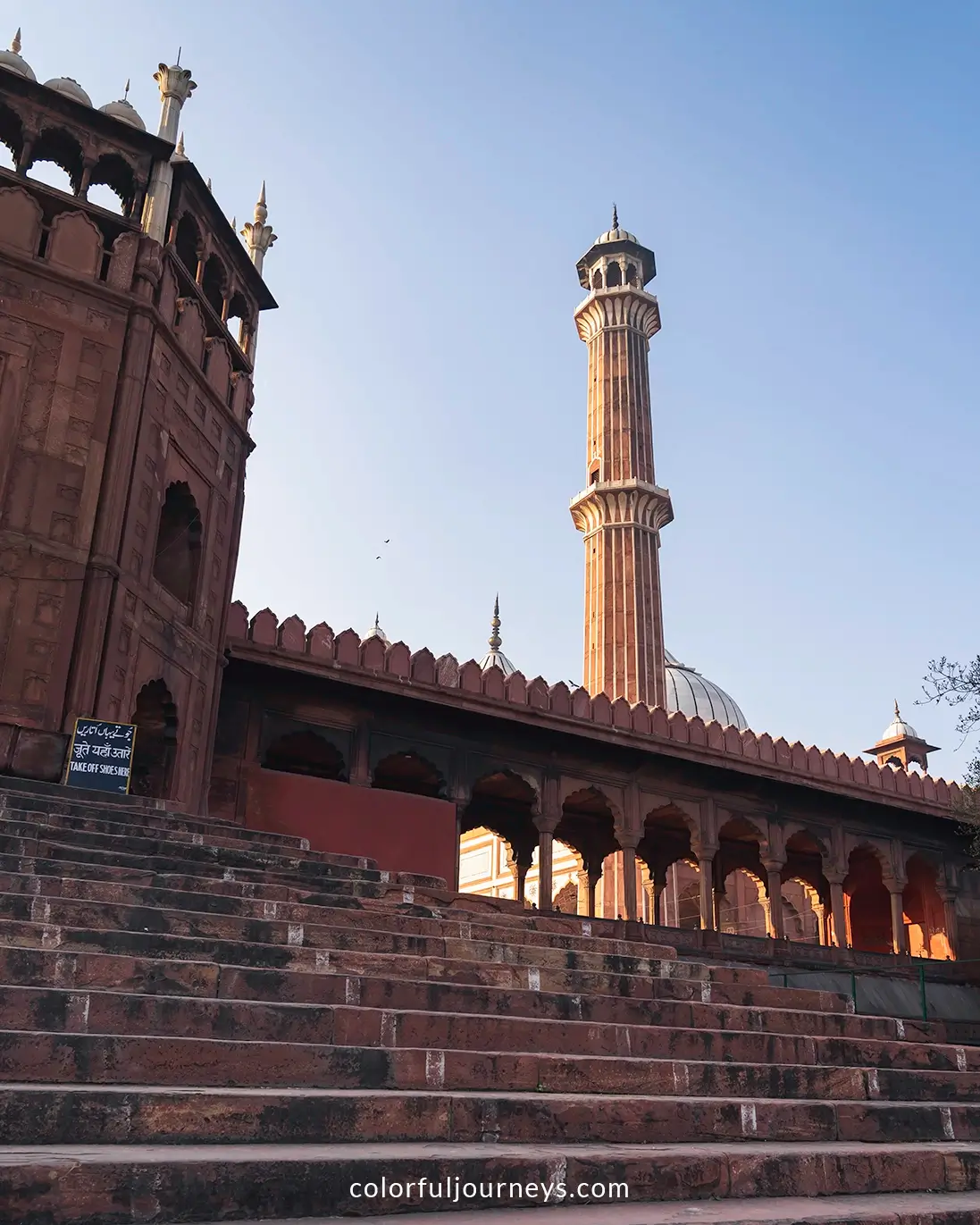
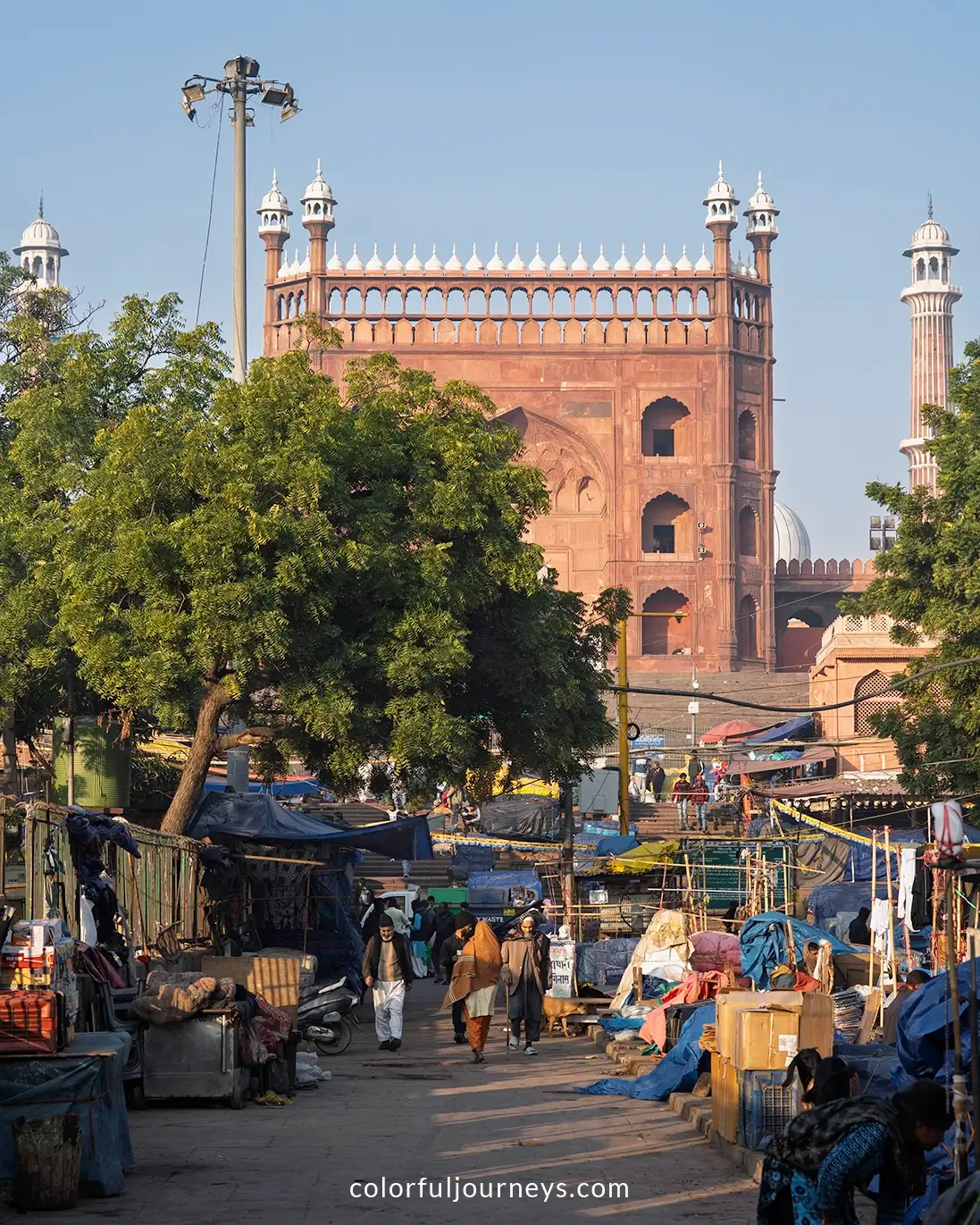
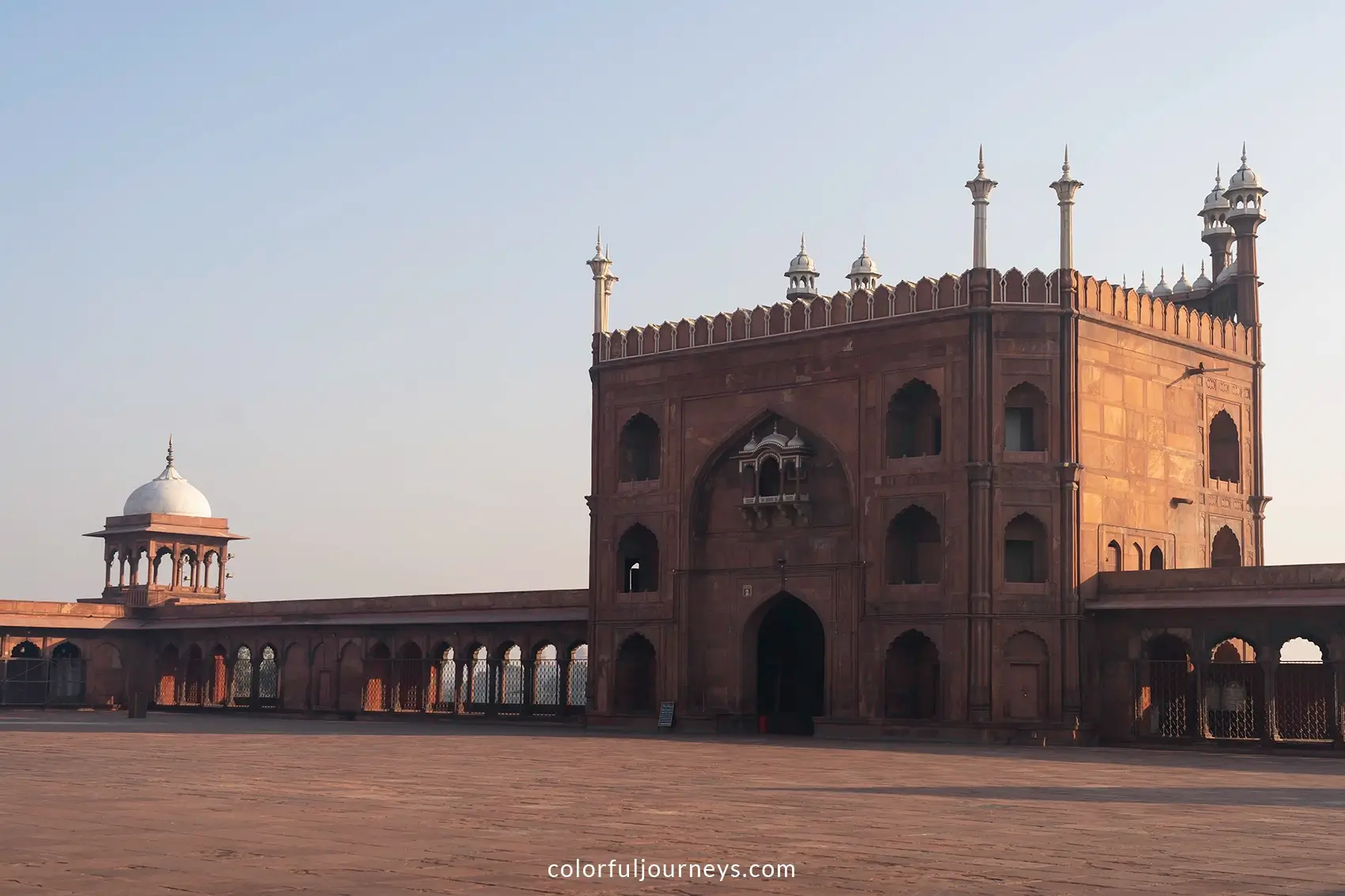
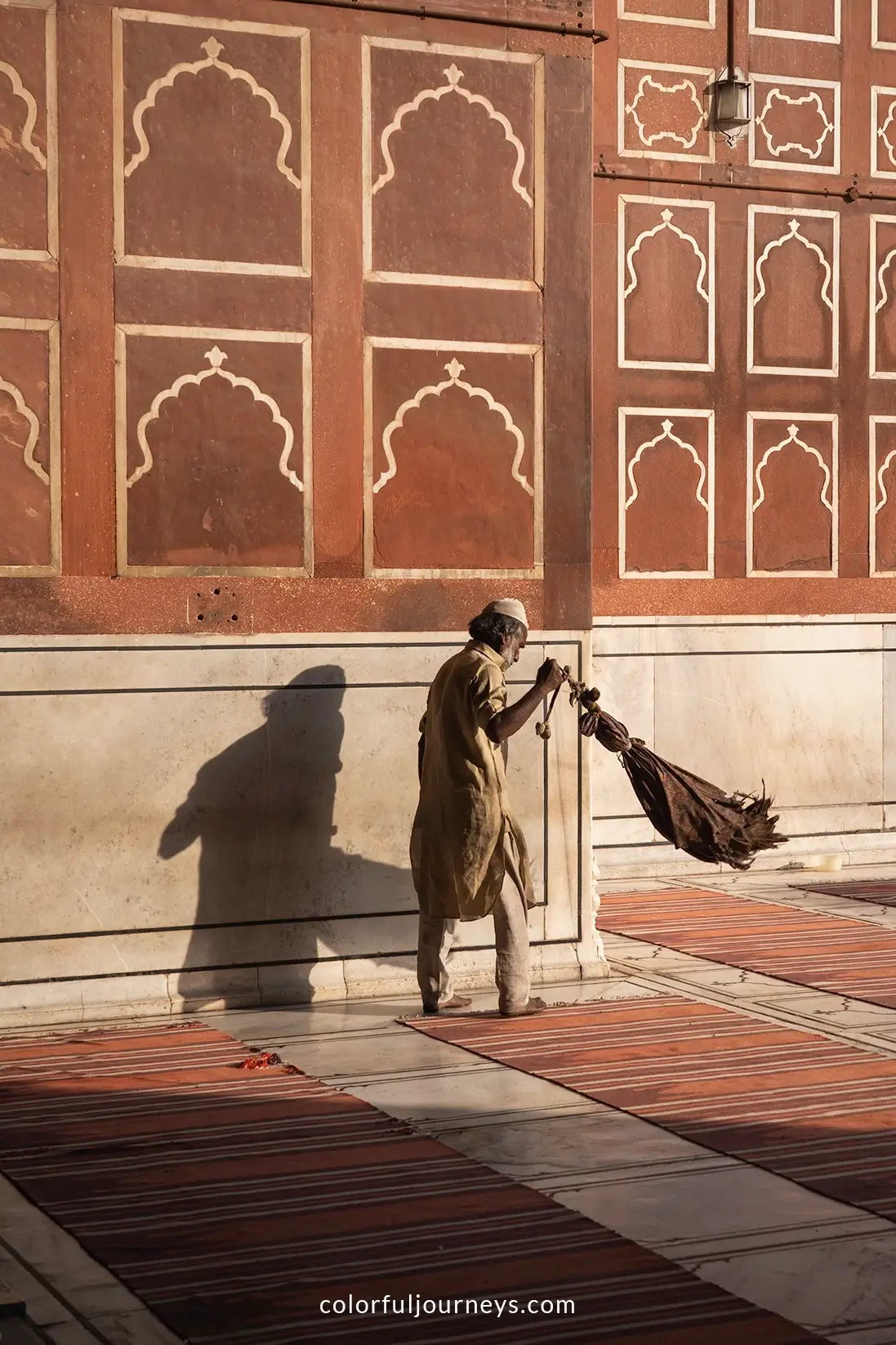
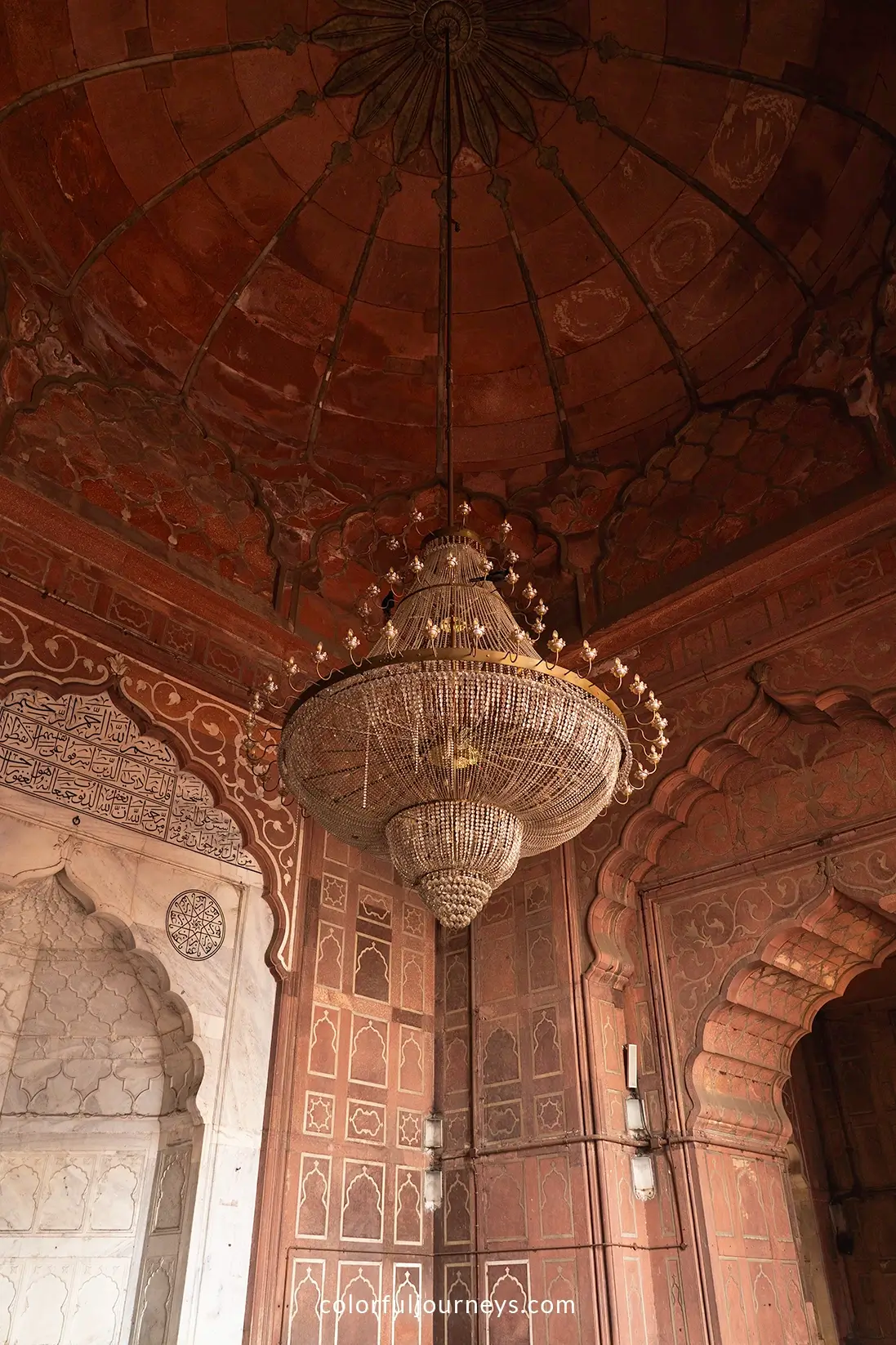
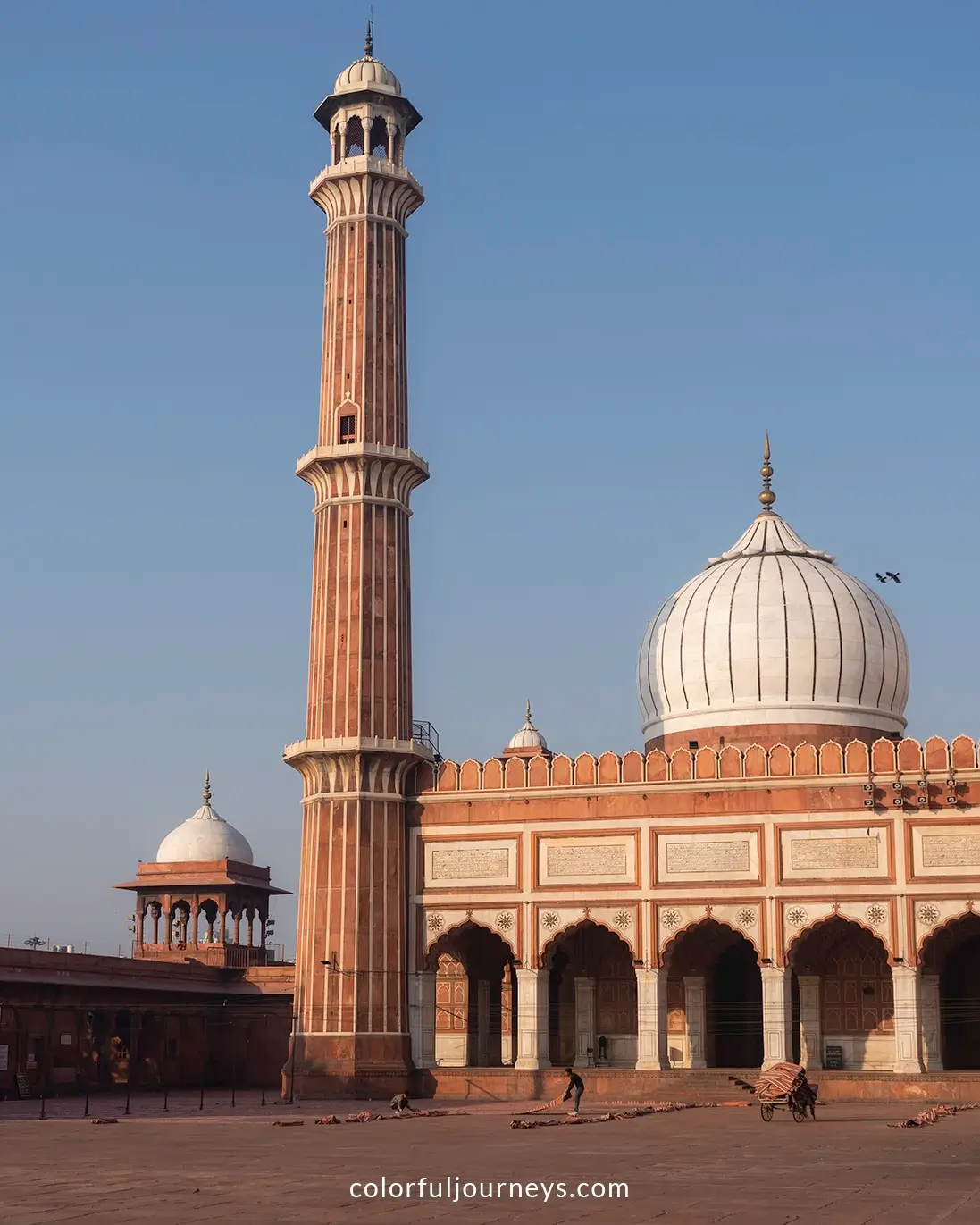
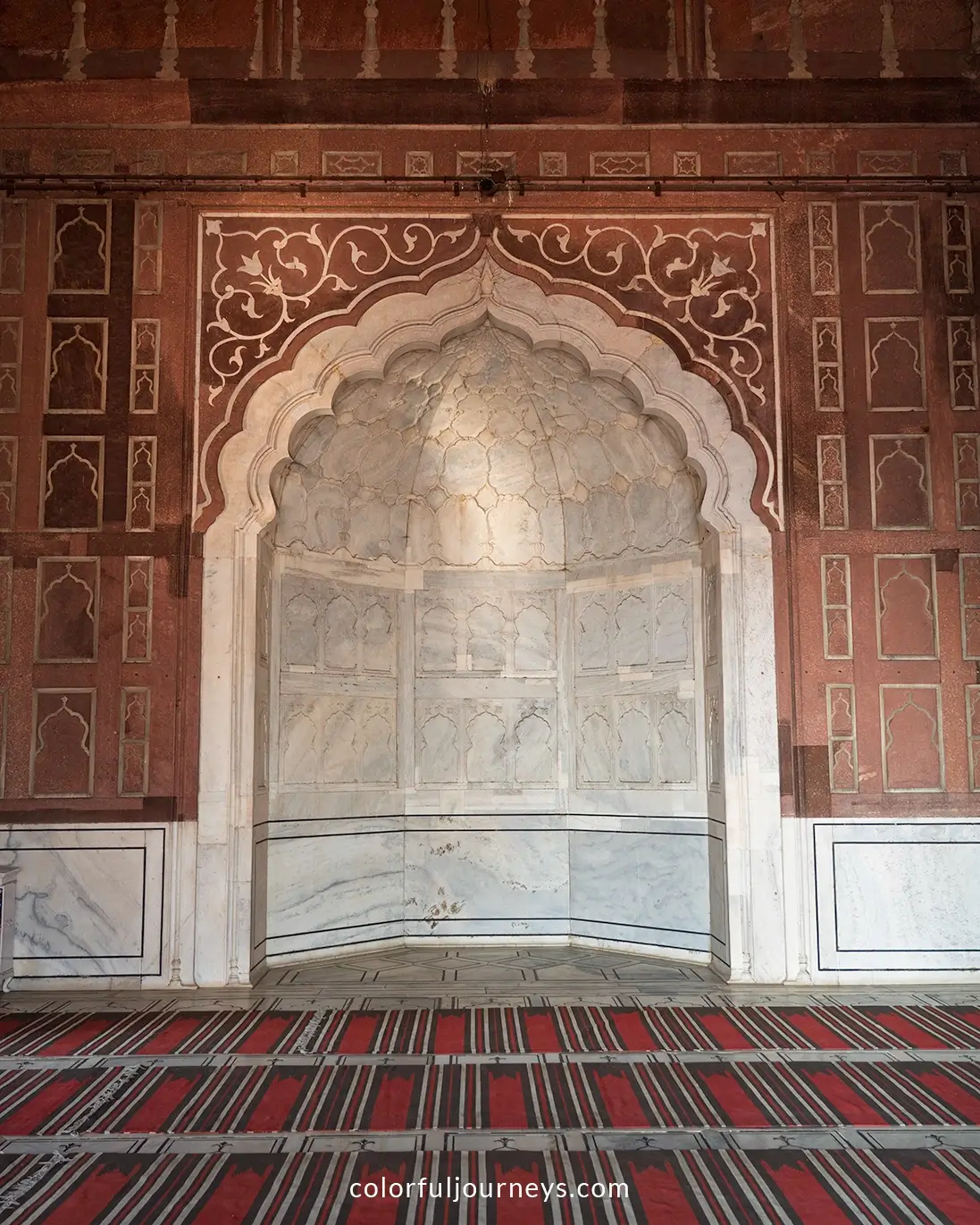
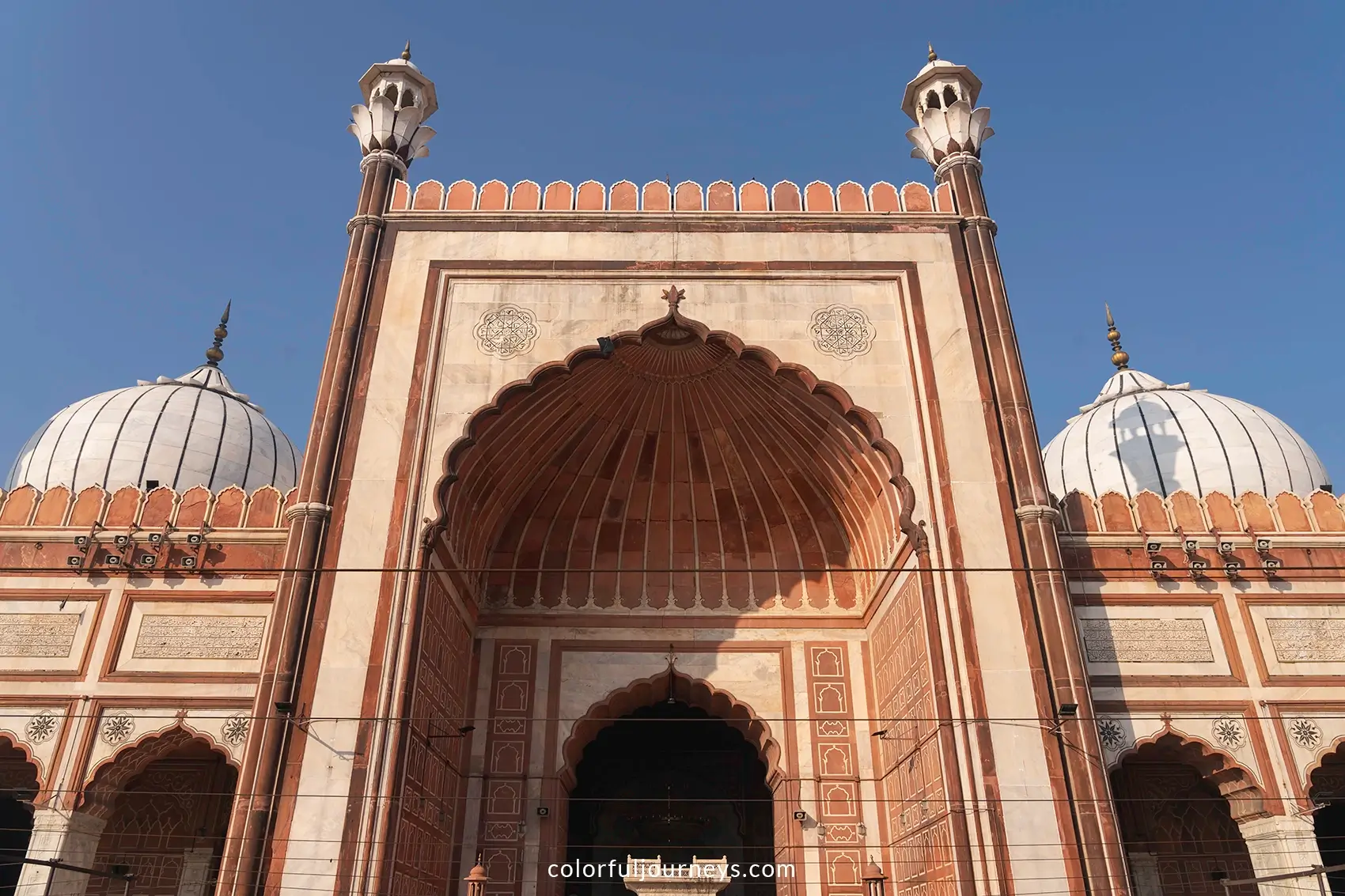
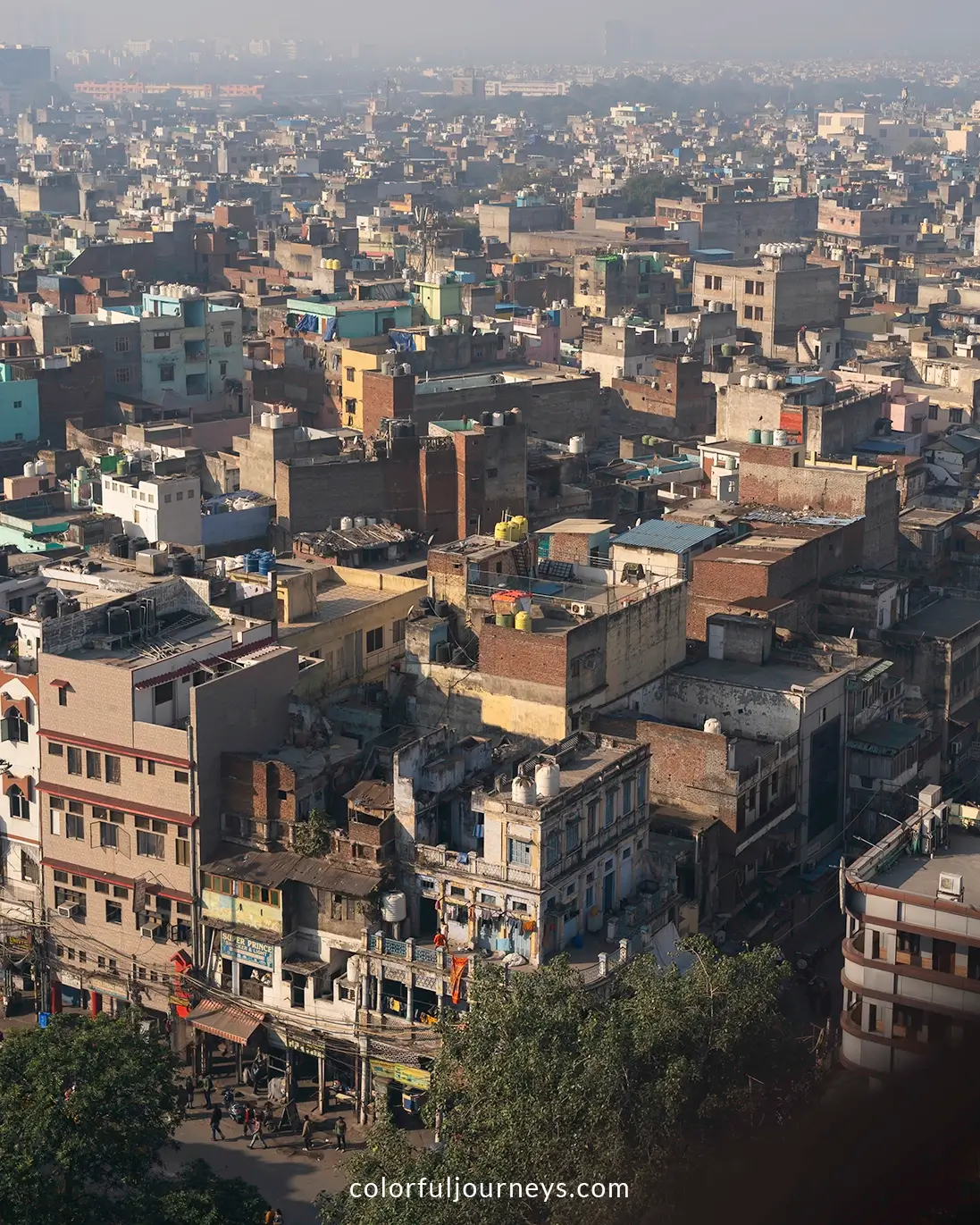
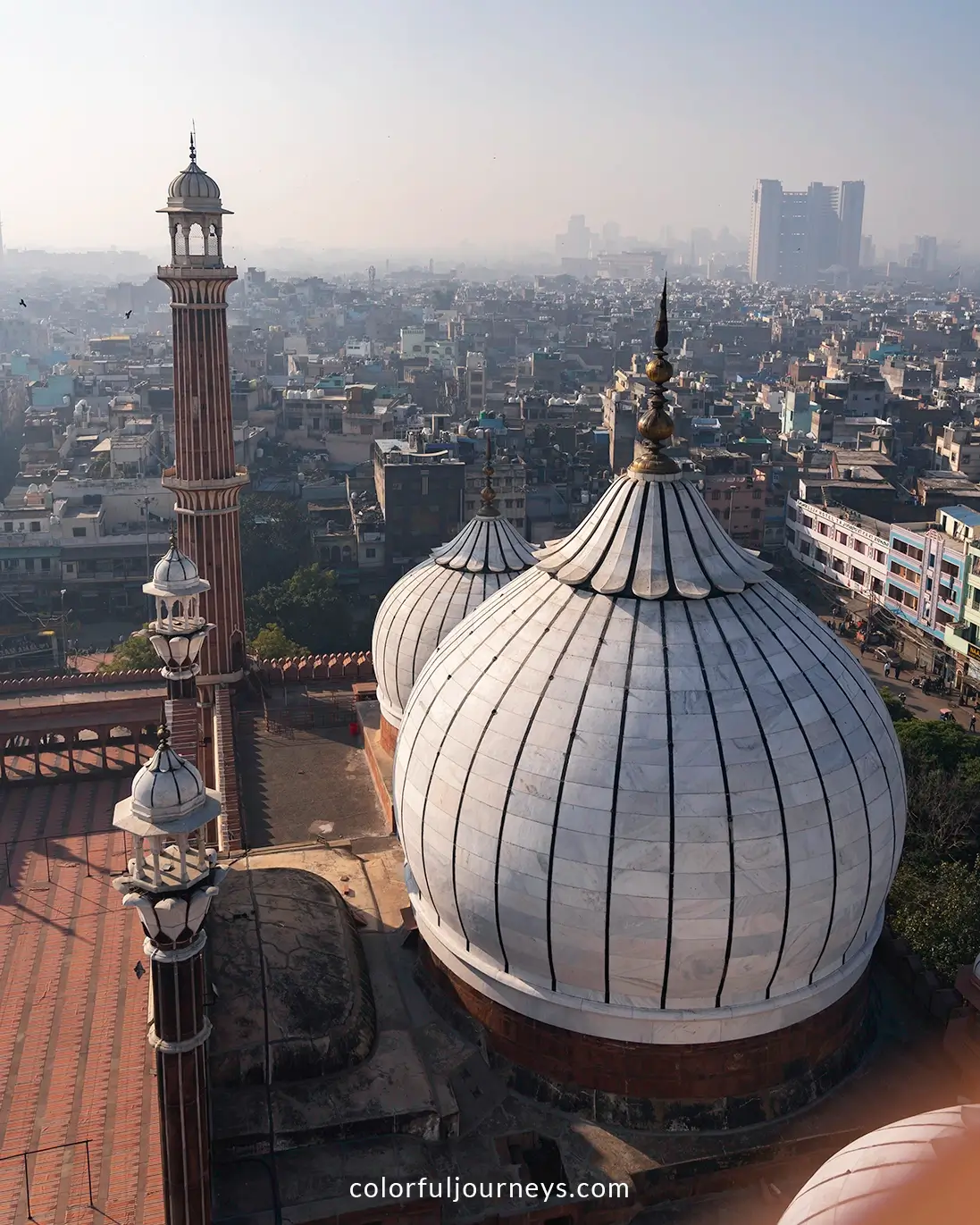
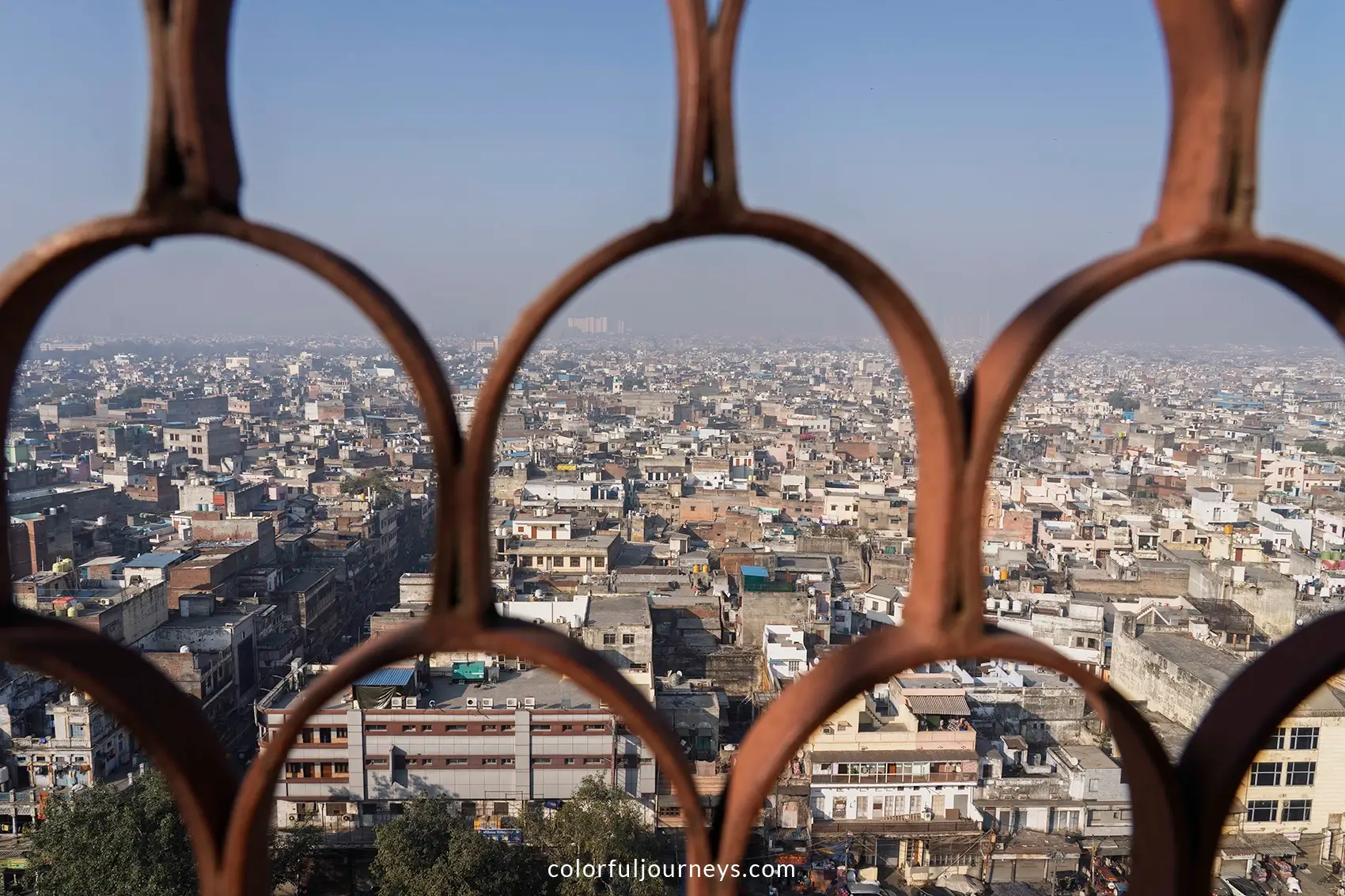
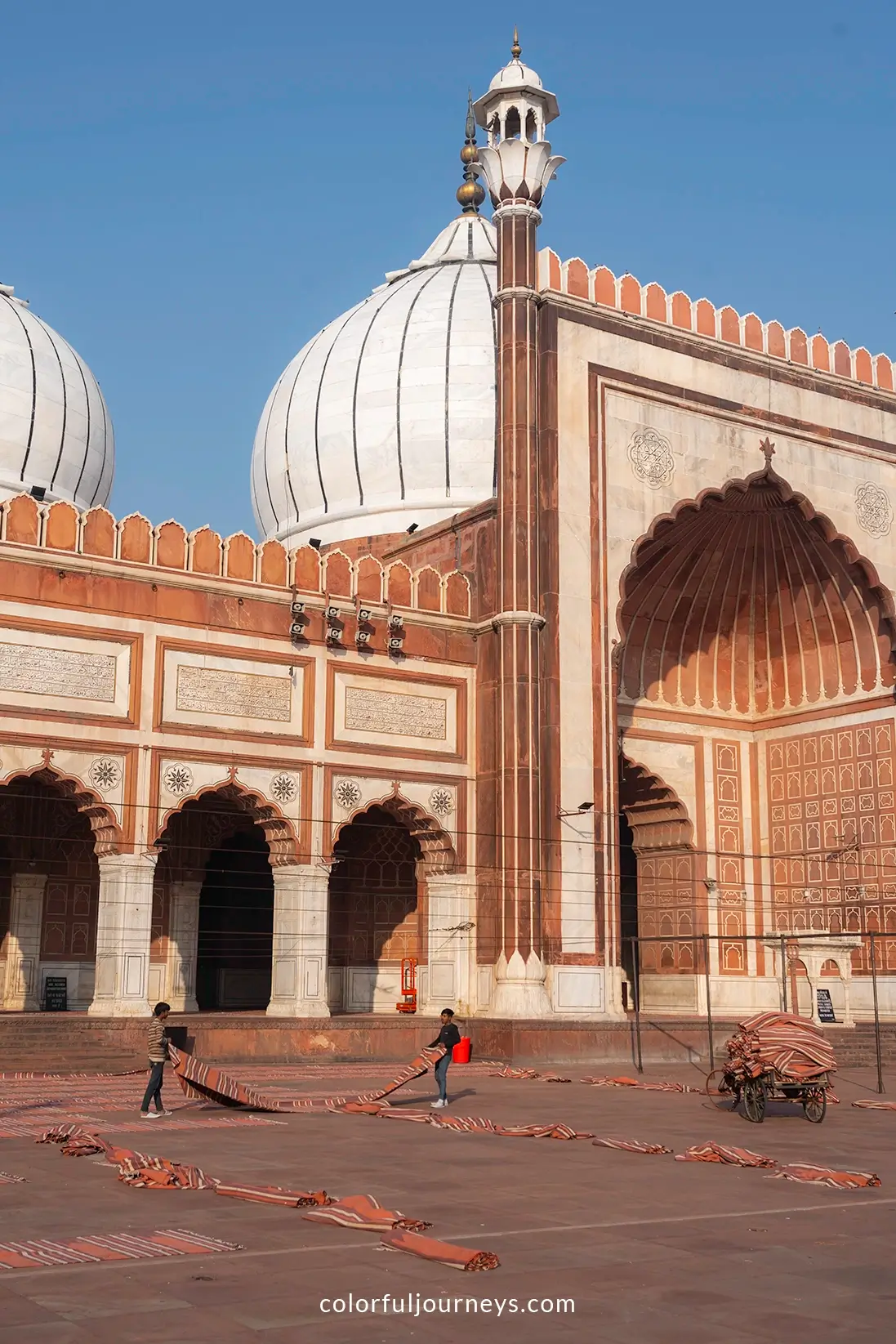
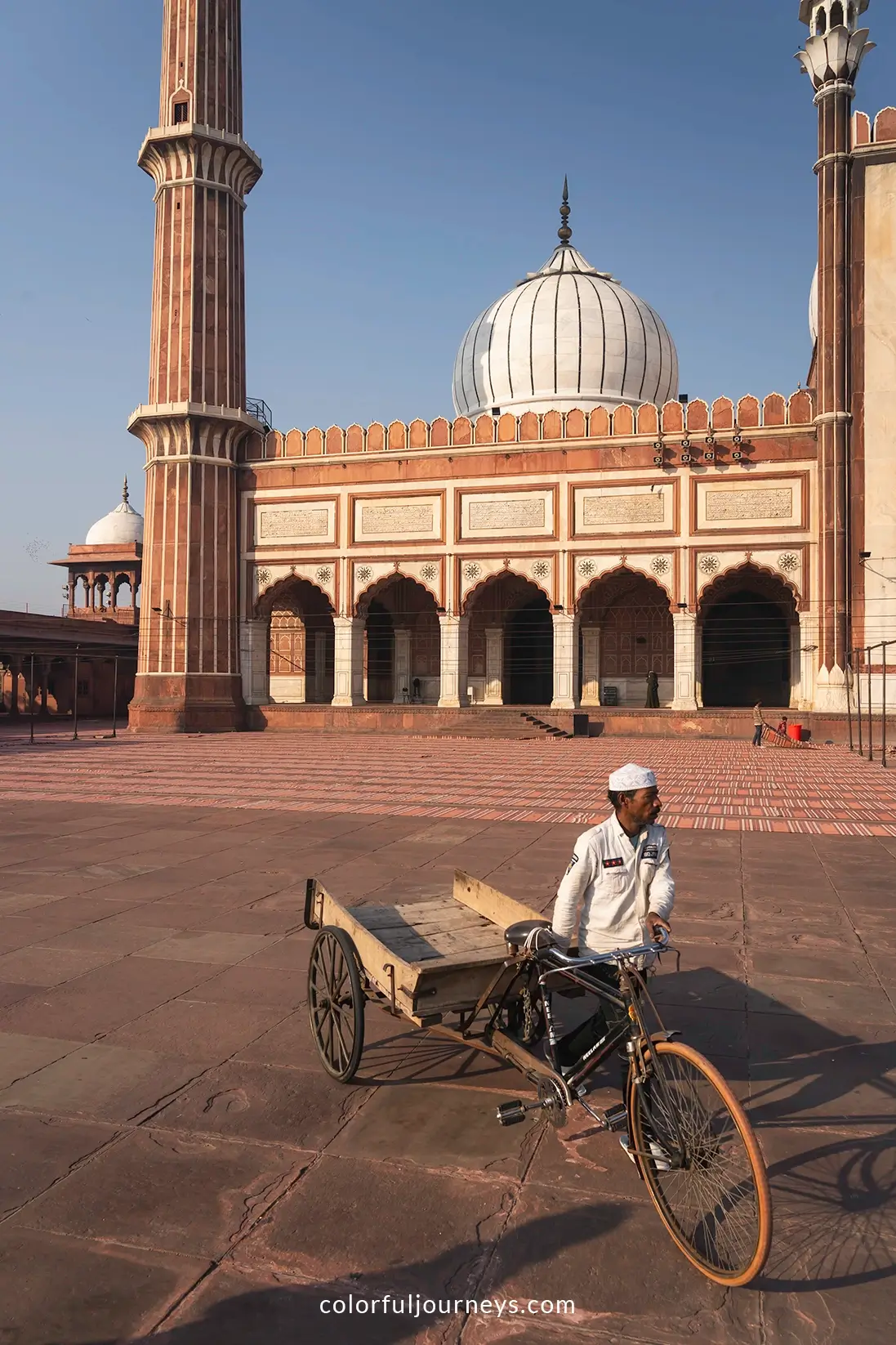


.webp)
.webp)
